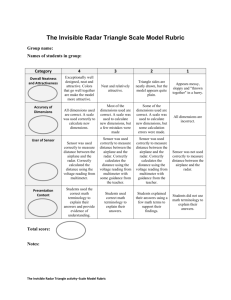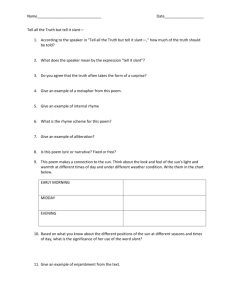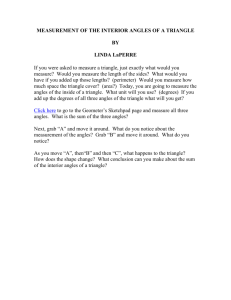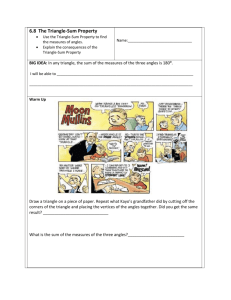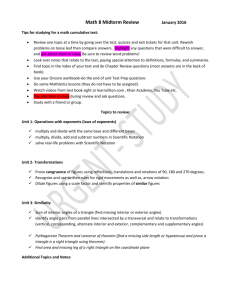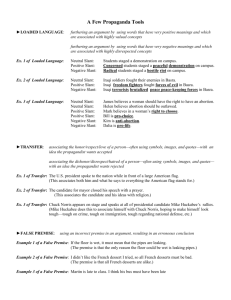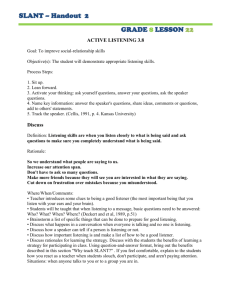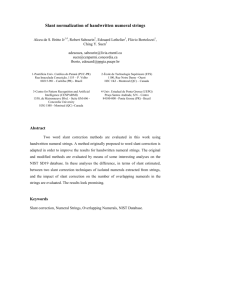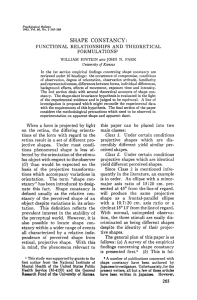The Invisible Radar Triangle Worksheet Answer Key
advertisement
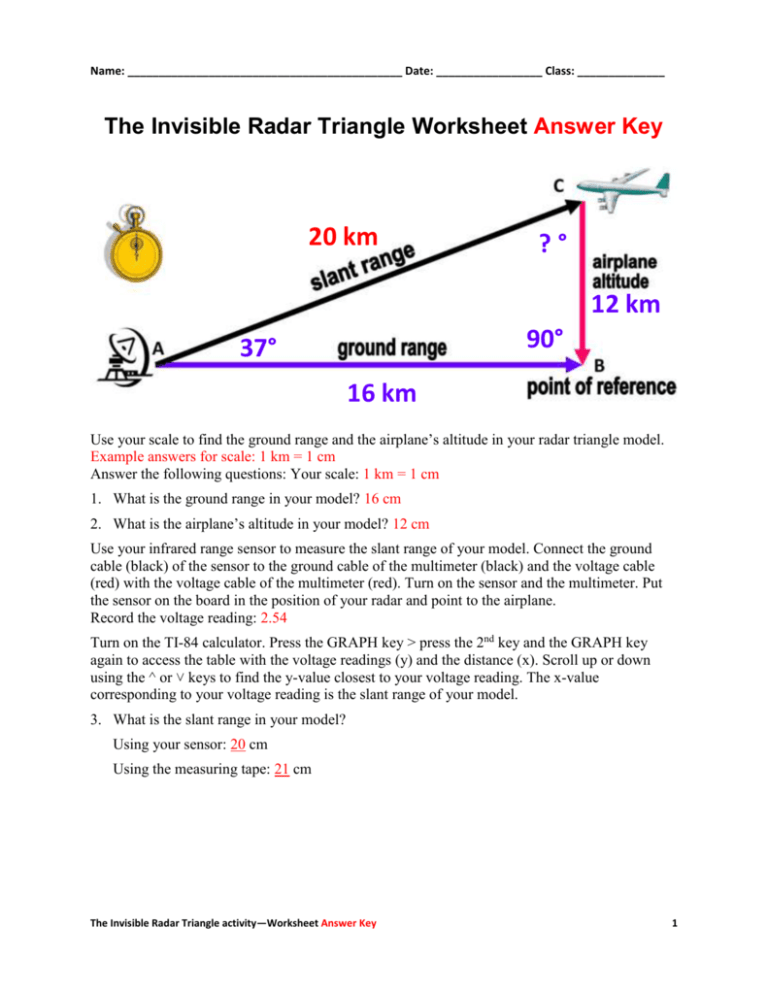
Name: ____________________________________________ Date: _________________ Class: ______________ The Invisible Radar Triangle Worksheet Answer Key 20 km ?° 12 km 90° 37° 16 km Use your scale to find the ground range and the airplane’s altitude in your radar triangle model. Example answers for scale: 1 km = 1 cm Answer the following questions: Your scale: 1 km = 1 cm 1. What is the ground range in your model? 16 cm 2. What is the airplane’s altitude in your model? 12 cm Use your infrared range sensor to measure the slant range of your model. Connect the ground cable (black) of the sensor to the ground cable of the multimeter (black) and the voltage cable (red) with the voltage cable of the multimeter (red). Turn on the sensor and the multimeter. Put the sensor on the board in the position of your radar and point to the airplane. Record the voltage reading: 2.54 Turn on the TI-84 calculator. Press the GRAPH key > press the 2nd key and the GRAPH key again to access the table with the voltage readings (y) and the distance (x). Scroll up or down using the ^ or ˅ keys to find the y-value closest to your voltage reading. The x-value corresponding to your voltage reading is the slant range of your model. 3. What is the slant range in your model? Using your sensor: 20 cm Using the measuring tape: 21 cm The Invisible Radar Triangle activity—Worksheet Answer Key 1 Name: ____________________________________________ Date: _________________ Class: ______________ Use a protractor to measure the angles in your model. Compare the angles in your model to their corresponding angles in the diagram. <A = 37° <B = 90° <A’ = 37° <B’ = 90° <C = 53° <C’ = 53° 4. What observations can you make? The corresponding angles are congruent. Use the › , ‹ or ꞊ signs to compare the ratio of the airplane’s altitude and ground range in your model to the ratio of airplane’s altitude and ground range in the diagram (corresponding sides). slant range Model Diagram 20 x = ground range 16 16 5. How do you know when two figures are similar figures? The corresponding angles are congruent and corresponding sides are proportional. 6. Is your model similar to the model in the diagram? Justify your answer. Yes, the shape is the same. 7. How could the information above help you calculate the slant range in the diagram? I can set up a proportion to find the slant range in the diagram. 8. What is the slant range in the diagram? 20 cm The Invisible Radar Triangle activity—Worksheet Answer Key 2
